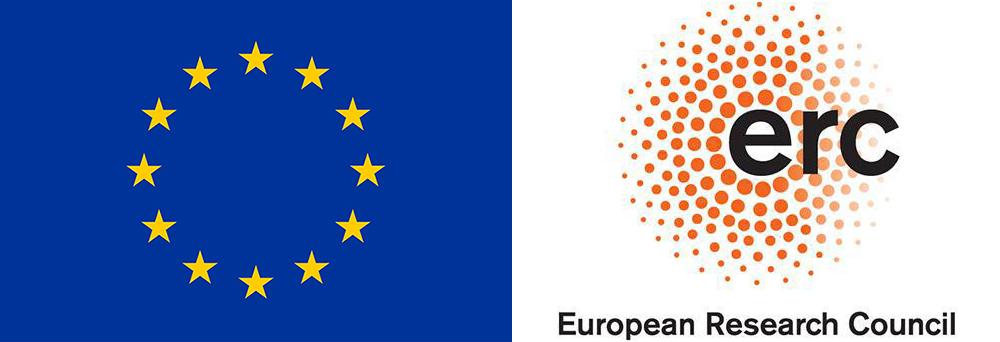Project - GLITR

Breaking through: The Impact of Turbulence on the Gas-Liquid Interface (GLITR)
The project aim is to understand how gases, e.g., O2 and CO2, are transported from a turbulent gas, e.g., air, into a turbulent liquid, e.g., water. The most common version of this interface we interact with every day is the atmosphere-ocean interface.
A rigorous understanding of the role of turbulence, with its wide range of scales and phenomena, on mass transport across a gas-liquid interface (GLI) is one of the remaining challenges in fluid mechanics.
Its importance is illustrated by considering that nearly 50% of anthropogenic CO2 is driven into the oceans by a turbulent process we do not fully understand. We know that turbulence modifies the topology of the GLI from both the liquid and gas sides, but due to the complexity of the problem, we do not understand the dominant mechanisms that control this process or how they connect to mass transfer.
Our group has previously shown how turbulence can be tailored in the lab and how the parameters of the turbulence influence shear on a surface, making us well placed to tackle this problem. A plethora of models based on limited data exist for mass transfer across a GLI, but they have contrasting backgrounds, parameters, and results. This is indicative that something is missing and that there is a critical need for deeper understanding of the underlying phenomena.
GLITR has been working to provide a step change in our understanding of phenomena at the GLI by initiating a paradigm shift in the way lab experiments are conducted, considering the complexity of interacting turbulent gas and liquid flows for the first time. Tailored turbulence with adjustable intensity and length scales will be generated with an active turbulence generator in both the gas and liquid simultaneously to provide new insight not previously accessible.
Thus far, we have developed a novel air-water facility where we can control turbulent and the flow in both the air and water independently, and measurement techniques that allow us to track the fluid motion in both the air and the water, the spatial distribution of oxygen being transported in water, and the surface topology simultaneously. Using these techniques we have demonstrated that turbulence alone can result in a 45% increase in the gas transfer velocity of O2 from air to water and that sub-surface turbulence is more important than capillary waves for this process. As GLITR moves forward, we will continue to press forward with technique development and elucidate the physics that govern this complicated process.
Publications
- L. Li, P.A. Bullee, S.Å. Ellingsen, R.J. Hearst (2025) Sub-surface turbulence or non-breaking capillary waves: which dominates air-water gas transfer? Journal of Fluid Mechanics, 1009:A48
- A. Shankaran, R.J. Hearst (2025) Simultaneous measurements of velocity, oxygen concentration and deformed interface position in an air-water channel using PIV and LIF. Experiments in Fluids, 66:95
- Y.H. Tee, J.R. Dawson, R.J. Hearst (2025) Volumetric study of particle-wake interactions based on free falling finite particles. Experiments in Fluids, 66:142
- M.A. Asadi, P.A. Bullee, R.J. Hearst (2025) The instantaneous structure of a turbulent wall-bounded flow influenced by freestream turbulence: streamwise evolution. Journal of Fluid Mechanics, 1005:A2
- P.A. Bullee, S. Weichert, A. Nore, L. Li, S.Å. Ellingsen, R.J. Hearst (2024) The influence of water turbulence on surface deformations and the gas transfer rate across an air-water interface. Experiments in Fluids, 65:132
- B.K. Smeltzer, O. Rømcke, R.J. Hearst, S.Å. Ellingsen (2023) Experimental study of the mutual interactions between waves and tailored turbulence. Journal of Fluid Mechanics, 962:R1
Project timeline and Funding

This project has received funding from the European Union's Horizon Europe 1.1 European Research Council under Grant Agreement No 101041000.
GLITR will run from 2022 until the end of 2027.
People at GLITR
-
Petter Rikheim Benonisen PhD Candidate
+4797538111 petter.r.benonisen@ntnu.no Department of Energy and Process Engineering -
Youssef Hussein Ragai Elashmawi PhD Candidate
+447402305553 youssef.h.r.elashmawi@ntnu.no Department of Energy and Process Engineering -
Amélie Ferran Postdoctoral Fellow
amelie.ferran@ntnu.no Department of Energy and Process Engineering -
Leon Li Postdoctoral Fellow
+4741270482 leon.li@ntnu.no Department of Energy and Process Engineering -
Adharsh Shankaran PhD Candidate
+4796825867 adharsh.shankaran@ntnu.no Department of Energy and Process Engineering
Associated researchers
-
Rafael Bölsterli PhD Candidate
rafael.bolsterli@ntnu.no Department of Energy and Process Engineering -
Simen Ådnøy Ellingsen Professor
simen.a.ellingsen@ntnu.no Department of Energy and Process Engineering -
Ali Semati PhD Candidate
ali.semati@ntnu.no Department of Energy and Process Engineering -
Srikar Yadala V Researcher | Fluids Lab & Equipment Coordinator
srikar.y.venkata@ntnu.no Department of Energy and Process Engineering
